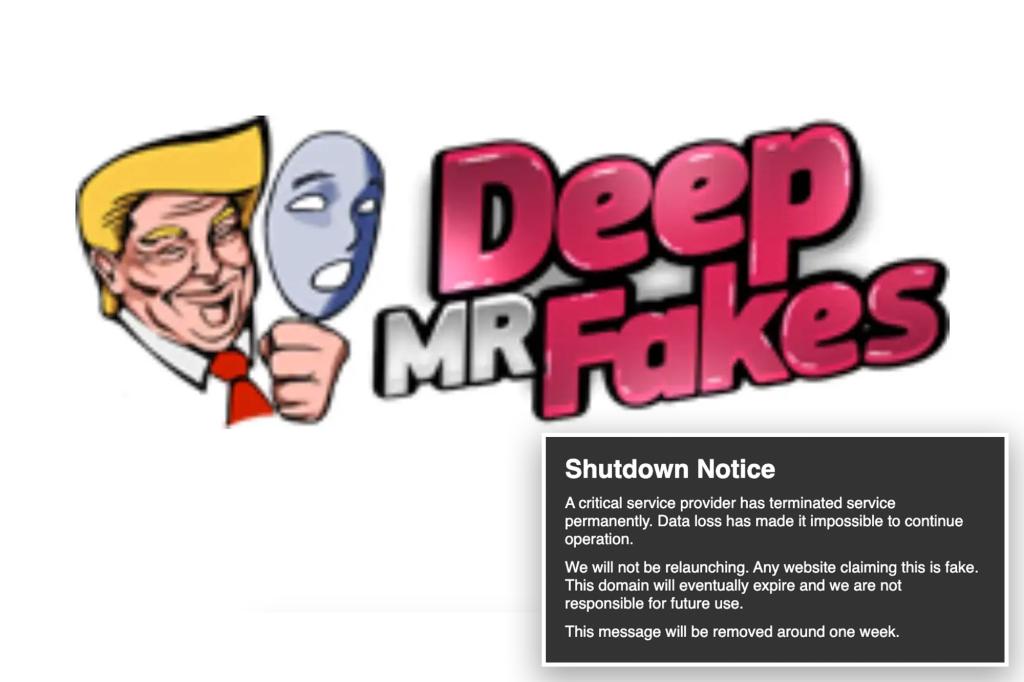Is the digital landscape being reshaped by a technology capable of mimicking reality, blurring the lines between truth and fiction? Deepfakes, once a niche curiosity, are now a formidable force, capable of deceiving, manipulating, and causing irreparable harm.
The internet, a vast and often unregulated space, has become the primary battleground for this new form of deception. The technology, which utilizes artificial intelligence to create hyperrealistic videos, is evolving at an astonishing rate, making it increasingly difficult to distinguish between what is real and what is fabricated. This has led to a growing sense of unease, with individuals, organizations, and even entire nations struggling to understand the implications of this technology and how to protect themselves from its potential misuse. The ramifications are far-reaching, touching on everything from political discourse and social media to personal privacy and legal proceedings. The very fabric of our reality is under scrutiny, and the ability to discern truth from falsehood is more critical than ever before.
One of the most prominent examples of this disturbing trend was the website known as Deepfakes. Founded in 2018, it quickly established itself as the most visible and widely known platform for the creation and distribution of deepfake pornography, often targeting celebrities and individuals without their consent. This site was not just a repository of manipulated videos; it was a marketplace where such content was readily available, accessible to millions, and, in many cases, used to exploit and defame its victims.
- Holly Revords Husband Unveiling Jacob Their Relationship Secrets
- Beyonces Sexy Photoshoot See Her New Pics Now
Here's a table that offers an overview of the "Deepfakes" site itself:
| Category | Details |
|---|---|
| Name | Deepfakes |
| Founded | 2018 |
| Primary Function | Distribution of non-consensual deepfake pornography |
| Content | Deepfake videos featuring celebrities and individuals without their consent |
| Monthly Visits | Reportedly over 6 million |
| Membership | Reportedly 250,000 members |
| Current Status | Shutdown, URL redirects to a closure notice |
| Known Impact | Significant in the creation and dissemination of non-consensual AI generated explicit content |
| Website | Reference: Wikipedia |
The site's notoriety was reflected in its substantial traffic, with reports indicating millions of monthly visits. It contained a vast library of videos, often designed to generate shock value and to capitalize on the vulnerability of its targets. This illicit enterprise was eventually brought to an end. The websites closure, announced via a shutdown notice, came as a result of a "critical service provider" terminating its service, a rare victory in the ongoing battle against AI-generated explicit content.
The impact of deepfakes extends far beyond the realm of adult entertainment. As the technology evolves, so do the potential applications and the potential for misuse. Deepfakes can be deployed to spread misinformation, influence political outcomes, damage reputations, and even incite violence. The potential for deepfakes to undermine the credibility of evidence in legal proceedings is particularly concerning.
- Jamie Kennedys Dating Life Girlfriend Affairs Relationships 2024
- Dafne Keen Exploring Claims Reality Google News
Consider the case of a witness providing testimony in a courtroom. A deepfake video could be created, casting doubt on the witness's account and potentially leading to a miscarriage of justice. In the age of deepfakes, the authenticity of any visual or audio evidence can be questioned. This erosion of trust poses a serious threat to the rule of law and the integrity of our judicial systems. This necessitates extreme caution and the implementation of innovative measures to verify digital evidence.
The ability to detect deepfakes is becoming increasingly crucial. While the technology is continuously improving, there are telltale signs that can help identify manipulated content. Imperfections in the rendering, such as slight mismatches between sound and motion, or unnatural facial expressions, are common. Experts also point out that deepfakes often struggle with realistic lighting and subtle body movements.
Professor Siwei Lyu, a computer science expert, has devoted years to developing AI methods for detecting fake videos, a critical endeavor given the proliferation of such content across social media platforms. The fight against deepfakes is multi-faceted, requiring both technological solutions and a heightened awareness of the risks among the public. The challenge lies in the constant cat-and-mouse game between creators of deepfakes and those striving to detect and counteract them. It involves staying a step ahead of malicious actors who are constantly refining their techniques.
The detection of deepfakes becomes increasingly challenging as the technology progresses. To counteract this, media literacy and critical thinking are paramount. People need to be educated about the potential for manipulation and encouraged to approach all online content with a healthy dose of skepticism. The key is to verify the source of the video. Checking the origin of a video is the first step. Was it published by a reputable news organization? Does the source have a history of accuracy? If the source is unknown or unreliable, extra caution is advised.
Several examples of deepfakes gaining significant media attention have emerged. Videos impersonating the actor Tom Cruise went viral, causing a stir. In another instance, a deepfake featuring Meta CEO Mark Zuckerberg appeared to confess to various actions. Such examples emphasize the importance of media literacy and the need for critical analysis of the content consumed.
The power of deepfakes extends to other fields, including art and entertainment. One popular example is a video that inserted Jim Carrey into Jack Nicholson's role in the classic film "The Shining." This demonstration showcases the potential of the technology for creative applications, though it also raises questions about copyright and the ethical implications of using someones likeness.
Even seemingly innocuous creations can highlight the potential for misuse. Take the scenario of a fake advertisement that tricks a large segment of the population. The consequences of such a manipulation could be substantial, ranging from financial losses to societal division. Deepfakes have the power to influence and deceive. It is therefore critical to remain vigilant.
In the fight against deepfakes, collaboration is essential. Researchers, tech companies, and policymakers must work together to develop tools and strategies to detect and combat the spread of manipulated content. This includes the development of AI-powered detection systems, the implementation of digital watermarks, and the promotion of media literacy. Efforts are underway worldwide to address this challenge.
Several governments around the world are taking action to address the issue of deepfakes. The UK, for instance, enacted a law in 2024 to combat the creation and sharing of deepfake pornography. This legislation marks a significant step in curbing the spread of non-consensual AI-generated explicit content.
Efforts like these, combined with technological advancements and the growing awareness of the threat, offer some hope in the ongoing battle against deepfakes. However, the challenge remains substantial. As the technology continues to evolve, so must our strategies for detection, prevention, and mitigation. This requires vigilance, education, and a commitment to safeguarding the integrity of our information environment.
For those curious about the authenticity of websites, there are tools available for assessing their reliability. A free review tool, for example, can be used to evaluate the legitimacy of a website. This allows users to make informed decisions about the content they encounter online.
Deepfakes also have implications for entertainment and pop culture. A recent example of this is the remix of Ice Spices Munch (Feelin U) that reimagines Danny Brown as the rap star. This creative application showcases how deepfakes can be used for artistic purposes.
The potential of deepfakes to deceive extends to various areas, from personal lives to political narratives. A crucial factor in assessing a potentially harmful website is its security protocols. This is a vital piece of information for keeping the digital environment safe.
While efforts are made to address the issues, it's essential for individuals to be proactive. Interacting with deepfakes is a way to learn about and understand them. These are the best tools for spotting a deepfake. It is recommended to go onto the front page of a website, right-click a video, and check the authenticity. The goal is to be well-informed and capable of making informed decisions.



Detail Author:
- Name : Bennie Kessler
- Username : tmclaughlin
- Email : karl.senger@terry.com
- Birthdate : 1998-09-24
- Address : 14045 Simeon Ferry Apt. 898 Kleinville, IA 76916-1858
- Phone : +14436510893
- Company : Donnelly PLC
- Job : Fiber Product Cutting Machine Operator
- Bio : Molestiae aspernatur qui itaque totam sit. Ut amet quia iusto. Et quos esse unde cum voluptatem illum placeat. Porro tempore tempore quidem sint asperiores non.
Socials
linkedin:
- url : https://linkedin.com/in/fritsch2002
- username : fritsch2002
- bio : Atque eligendi eum aut quo est.
- followers : 2922
- following : 1493
twitter:
- url : https://twitter.com/zfritsch
- username : zfritsch
- bio : Eos doloribus quis perferendis. Quod debitis ex saepe tempora. Eveniet quidem cum aut provident est numquam voluptatem non.
- followers : 6108
- following : 1974
tiktok:
- url : https://tiktok.com/@zfritsch
- username : zfritsch
- bio : Eius occaecati id excepturi.
- followers : 6572
- following : 244
instagram:
- url : https://instagram.com/zfritsch
- username : zfritsch
- bio : Tempore iste necessitatibus voluptate et excepturi. Nesciunt voluptas sed aut earum non porro.
- followers : 4729
- following : 292